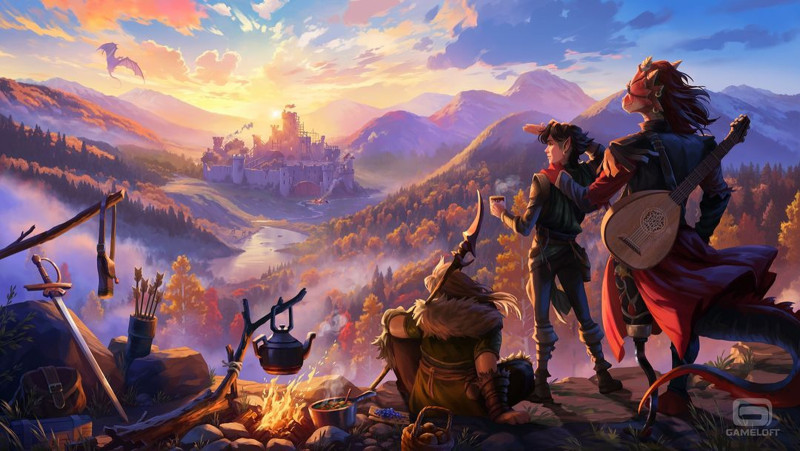
There are interesting things to be said about every Final Fantasy game, and Final Fantasy V is no different. A lot of that comes from the fact that for a long time it was widely inaccessible to a Western audience. There was a strain of thought that the game featured the same kind of emotionally charged and in-depth storytelling as Final Fantasy VI, but with a deep and involved job system to boot, making it a more complex actual game.
Of course, when the game actually did get a Western release, it turned out that this was not true; the story is fine, it’s fun, but it is a very light affair without a whole lot of character depth. It’s definitely not trying to be high drama.
That’s not to say that there’s nothing going on in the game by any means, but it does perhaps explain why even though the game has been playable by local audiences for a long time, a lot of people don’t know the first thing about FFV beyond maybe “ha ha, they used to localize the protagonist’s name as Butz.” But since Final Fantasy XIV has made the game a central figure in the new exploration content, now is a perfect time to dive into the details of this particular title.
First and foremost, I think it’s important to note what is not a reference to FFV, and that’s the dozen of civilizations that the Southern Horn is host to. There was an ancient advanced society in FFV, but that society was Ronka, and rather than being defined by different forms of magic, they were a fairly normal (by franchise standards) group of high-tech precursors to the modern age. The War of the Magi is an element of Final Fantasy VI’s backstory, so while there are various nods to potential elements moving forward, FFV is not covering the Fifth Astral Age itself.
That being said, the mention of Karnak is interesting. Karnak in FFV is a town built around exploiting the Fire Crystal, but the appearance of Karnak’s mages specifically references the Mystic Knight job and its ability to meld spells onto melee weapons. Players have been discussing/speculating about Rune Fencer/Mystic Knight as a job for ages now, so this seems relevant; it doesn’t mean that it’s on the way, but it does serve as further confirmation that this did actually exist in the game world!

Obviously, all of the Phantom Jobs are themselves taken from FFV; however, what is notable is that they are not all taken from the base version of FFV. Oracle and Cannoneer are both taken from the Gameboy Advance remake of FFV – added jobs along with the Sealed Temple superdungeon toward the end of the game. This is noteworthy because it’s a distinct difference from the modern reality of the game as part of the Pixel Remaster project, treating the altered game as being equally “true” as the base game elements.
The jobs are broadly similar to their form in FFV, but the comparison is not one-to-one. Some of this is unsurprising; for example, Phantom Chemist does not really mirror how the actual FFV Chemist worked, with its whole “Mix” system, and indeed nothing similar seems to have been attempted. There’s a general sense of inheriting many of the broad elements without the exact mechanics. Also worth noting is that you are not able to transplant job abilities on to one another. That may be coming later, but it may not.
As a slight aside, I had speculated before that Phantom Jobs represented a broad class of jobs that we would not get as full jobs. The final lineup makes it clear that this is not the case at all, and rather they represent different takes on jobs, some of which we already have, some of which we may still get, some of which we definitely will not. This is worth at least a bit of attention, I feel.
The links to the Sealed Temple don’t end there, either. The Cloister Demon does not have the same name as the Archaeodemon from the GBA game, but it clearly is drawing from the same well; likewise, the Trade Tortoise is a reference to the Gil Turtle, the Advanced Aevis is a callback to the Grand Aevis, and the Crystal Dragon is a regular enemy in the game.
Meanwhile, the Forked Tower is entirely based upon one side of the Fork Tower in FFV. In that game, the tower required you to split up your party into two groups of two; one side allowed only physical attacks, while the other allowed only magic, and both unlocked powerful spells at the end. The Forked Tower: Blood is broadly based on the physical side of things, with the final boss of the Magitaur being reminiscent of the Minotaur fought on the physical tower.
Oh, and let’s not forget that Archive is dressed up like Omniscient, the boss from the other side of the Fork Tower.

So what does all of this say about the actual story here? Well… nothing. Actually, very deliberately nothing. Probably. Because the most obvious reference to FFV in terms of story comes from the MSQ at this point. See, remember how I mentioned that FFV is oddly not remembered by a lot of the English-speaking fandom? The thing is that a major plot point of that game is that there are actually two separate worlds you’re exploring. Three of the party’s main playable characters – Bartz, Faris, and Lenna – are from the main world you start on. The other two are from another world, and a major plot point is when the other world merges with the first one.
Ah, wait, silly me! I forgot to name those two party members. I wonder why? Anyhow, the two party members from the other world are Galuf and Krile.
Obviously, Galuf in FFXIV was from the Source, but Krile was quite explicitly from the Ninth, even though her ancestors appear to have also come from the Source. And I think this is all important and worth noting because it seems unlikely that the Crescent’s story will involve any kind of multi-world merging. I’m not sure what they’re ultimately going for here beyond some sort of living museum, but as the story points out, that is at odds with the fact that the Crescent is currently highly difficult to access. Why does it exist? What was the goal? What are we doing here?
Those answers remain to be seen, though we’ll almost certainly get more hints in the next couple of patches before we head to the other major exploration zone. I just think it’s equally important to note what a working knowledge of FFV can predict and what it can’t in this case.
Feedback, as always, is welcome in the comments down below or via mail to eliot@massivelyop.com. Next week, I want to take the opportunity to speculate on something that is very deliberately weird. I’ve been talking about future jobs being added to FFXIV for ages now, but what if that doesn’t happen any more? Why wouldn’t it, and what would that look like?
 The Nymian civilization hosted an immense amount of knowledge and learning, but so much of it has been lost to the people of Eorzea. That doesn’t stop Eliot Lefebvre from scrutinizing Final Fantasy XIV each week in Wisdom of Nym, hosting guides, discussion, and opinions without so much as a trace of rancor.
The Nymian civilization hosted an immense amount of knowledge and learning, but so much of it has been lost to the people of Eorzea. That doesn’t stop Eliot Lefebvre from scrutinizing Final Fantasy XIV each week in Wisdom of Nym, hosting guides, discussion, and opinions without so much as a trace of rancor.


